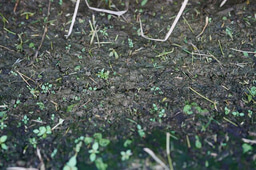No Free Lunch — A soil perspective on sustainable agriculture
Published in Earth & Environment, Ecology & Evolution, and Agricultural & Food Science

In the heart of the US Corn Belt, a two-decade experiment set out to regenerate soil and mitigate climate change. Researchers diversified conventional corn–soybean rotations by incorporating small grains, legumes, and manure. The goal was straightforward: boost soil organic carbon (SOC) and improve soil health through increased crop diversity and organic inputs. But when we assessed long-term outcomes, the results were unexpected. Despite years of cultivation, diversified cropping plots held no more carbon than conventional ones. Instead, they exhibited substantially greater nitrogen availability. This surprising outcome: more fertility, but no added carbon, highlights a critical carbon–nitrogen trade-off with important implications for climate and agricultural policy.
Carbon–Nitrogen Trade-off
Diversified cropping systems are widely promoted as climate-smart. By integrating legumes like alfalfa and replacing synthetic fertilizer with manure, farmers can enhance soil health, biodiversity, and water quality. These practices are also expected to sequester carbon; in fact, many carbon offset protocols cite increased crop diversity as a path to SOC accumulation. Yet our 20-year study offers a more nuanced view. Although these systems added more carbon through residues and manure, accelerated decomposition offset those gains, resulting in no net SOC increase. To investigate this paradox, I led an interdisciplinary study combining field measurements, long-term soil incubation, stable isotope tracing, and mechanistic modeling (Yi and Huang et al., 2025, Nature Sustainability). At Iowa State University’s Marsden Farm, we compared conventional corn–soybean rotations with three- and four-year systems including oats, clover, alfalfa, and manure. We collected one-meter soil cores and incubated them for over a year in the lab. Using stable carbon isotopes, we traced whether the released CO2 came from recent inputs or older, previously stored carbon. Our isotope-enabled models confirmed that added organic matter stimulated microbes to break down existing carbon stocks. More carbon entered the soil, but more was also lost.
Nitrogen Gains, Climate Benefits
This increased microbial activity had a key benefit: greater nitrogen mineralization. Diversified systems produced about 70% more plant-available nitrogen than conventional plots. As microbes decomposed organic matter, they released nitrogen in forms accessible to crops, reducing dependence on synthetic fertilizer. This not only enhanced soil fertility but also curbed emissions of nitrous oxide (N2O, a greenhouse gas nearly 300 times more potent than CO2). We estimated that diversified plots reduce N2O emissions by 60–70%. Though SOC remained stable, climate benefits emerged through reduced N2O emissions and improved nitrogen supply.
Rethinking carbon markets
Our results prompt a reassessment of how we reward sustainable farming. Current carbon markets often focus narrowly on SOC gains, excluding substantial climate benefits through other pathways. Farmers adopting diversified rotations may see no carbon credit despite improving soil health and lowering greenhouse gas emissions. We need updated protocols recognizing total greenhouse gas reductions, including reduced N2O emissions, and supporting practices that enhance ecosystem function beyond carbon storage alone.
Toward a holistic view of soil health
This study underscores the value of integrating soil ecology, isotopic biogeochemistry, and mechanistic modeling to solve complex sustainability challenges. Our work connects field and lab work with policy-relevant implications, offering new insights for climate-smart agriculture. As we refine soil stewardship strategies, recognizing the dual roles of carbon and nitrogen and better steward the carbon and nitrogen beneath our feet is essential.
Follow the Topic
-
Nature Sustainability

This journal publishes significant original research from a broad range of natural, social and engineering fields about sustainability, its policy dimensions and possible solutions.


Please sign in or register for FREE
If you are a registered user on Research Communities by Springer Nature, please sign in